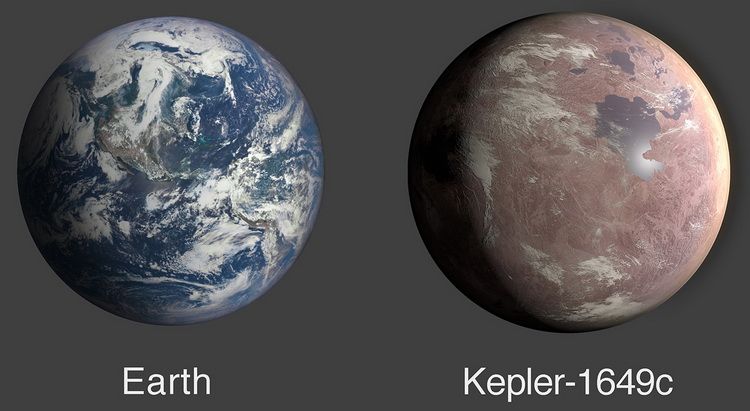The NASA orbital telescope “Kepler” has already retired after its ten-year mission, but its work is still bearing new fruit today. On Wednesday, the US space agency announced that another exoplanet very similar to Earth had been found in the old data room observatory.
The discovered planet Kepler-1649c is 300 light-years away from Earth. NASA described it among thousands of other exoplanets discovered with the “Kepler” telescope as the most similar to Earth in size and construction temperature. The planet is located in the inhabited zone of its star, in an area where the existence of water in a liquid state is possible.
The newly discovered exoplanet is slightly larger than the Earth. It receives 75% of the luminous flux that our planet receives from the Sun, which could also indicate the similarity of the temperature regime on Kepler-1649c and Earth. Originally, the planet was not identified because of a flaw in the computer algorithm, but a group of scientists were able to track it down while studying the telescope’s data.
“This fascinating, distant world gives us even greater hope that the Second Earth is between stars waiting to be discovered,” said Thomas Zurbuchen, the first deputy director of NASA’s science mission department in Washington, DC.
But you shouldn’t hurry to pack your bags. Kepler-1649c is in the orbit of a red dwarf, a type of star that NASA said was known for star flares that can make the planet’s environment difficult for any potential life. The space agency also warned that the atmosphere on an open exoplanet is still a mystery and that calculations of its size could be wrong.
